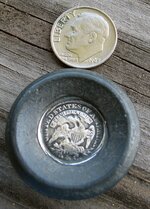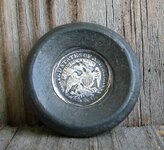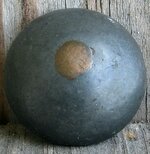tngirl
Hero Member
- Mar 16, 2012
- 634
- 224
- 🏆 Honorable Mentions:
- 1
- Detector(s) used
- Fisher 1266x & 1280 Aquanaut, White's XLT
- Primary Interest:
- Metal Detecting
Hi all,
Found this at a yard sale yesterday. It appears to be a half dime set in lead, but I can't figure out why. I don't even know if it's a real coin, although it appears to be silver. The lead is cup shaped, and on the reverse there is a spot of brass or copper in the center. I put the modern dime next to it for size reference, but even though they look to be the same size in the pic, the half dime is a little bit smaller. Not sure how much of the edge of the coin is in the lead though. Since I've never seen an actual half dime, I don't know how big they are. Any ideas on why it is set in lead, or if it is a real coin? It has me puzzled.
Found this at a yard sale yesterday. It appears to be a half dime set in lead, but I can't figure out why. I don't even know if it's a real coin, although it appears to be silver. The lead is cup shaped, and on the reverse there is a spot of brass or copper in the center. I put the modern dime next to it for size reference, but even though they look to be the same size in the pic, the half dime is a little bit smaller. Not sure how much of the edge of the coin is in the lead though. Since I've never seen an actual half dime, I don't know how big they are. Any ideas on why it is set in lead, or if it is a real coin? It has me puzzled.








 Breezie
Breezie



